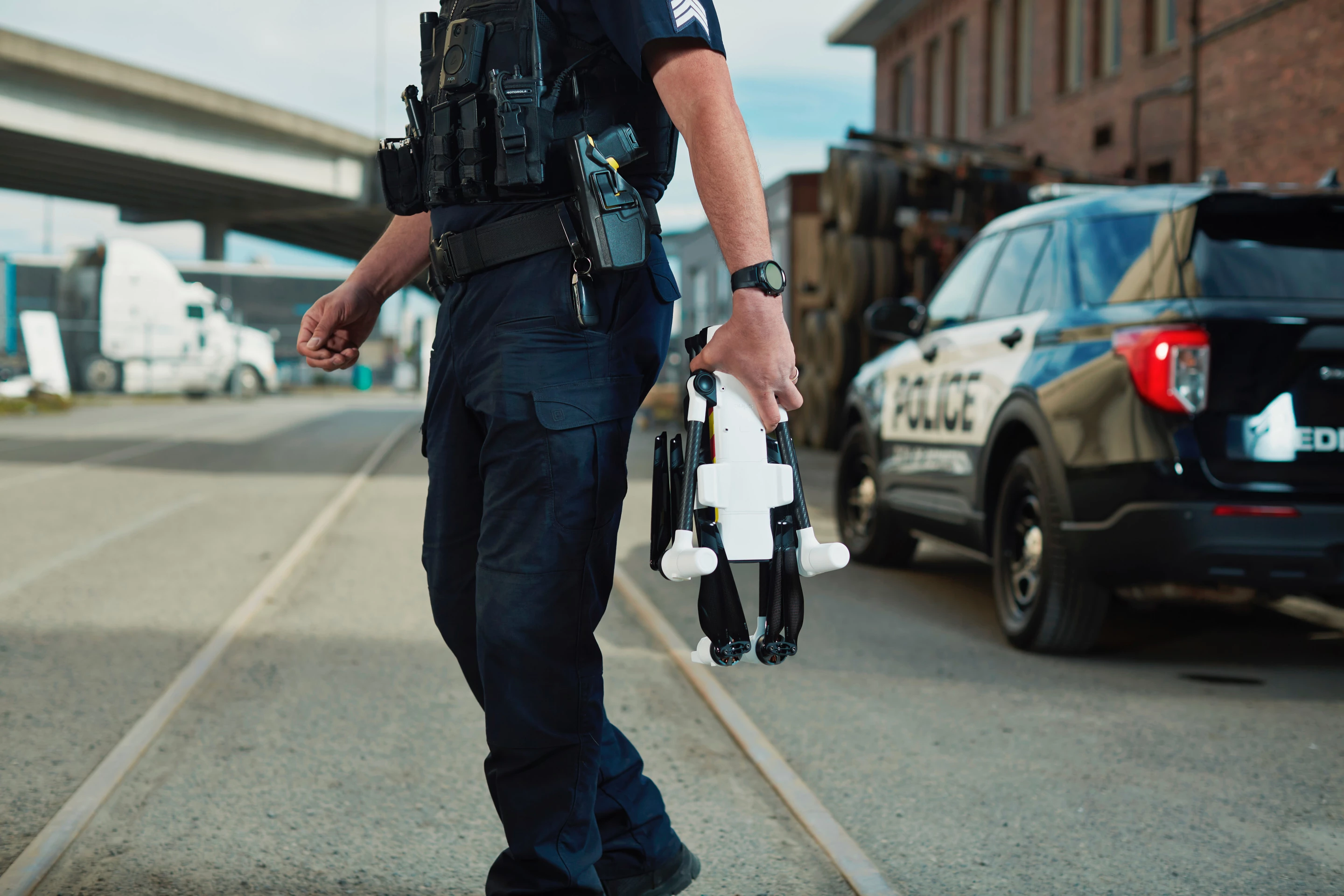Wouldn't it be neat to see a drone using flashing blue and red lights and a siren to chase down crooks? Well, the Responder quadcopter comes equipped with both, along with other gear designed to help quicken response times when crimes or other emergencies occur.
Manufactured by Seattle-based startup Brinc, the Responder is intended for use by police forces, fire departments, ambulance services and other first response agencies.
Along with its lights and siren, the autonomous drone is also equipped with a 40x-zoom HD optical camera array; a thermal imaging camera; a spotlight; a two-way communications system including a speaker and microphone; plus a payload system that allows the aircraft to carry and drop life-saving items such as EpiPens, automated external defibrillators, personal floatation devices, and naloxone (for treating opioid overdoses).

The idea is that multiple Responders will be stationed throughout the city, each one protected inside its own robotic Responder Station "charging nest" when not in use.
When a 911 call is relayed to the appropriate dispatcher, that person may decide to send the closest available Responder to the location of the emergency – the aircraft can reportedly take off from its Responder Station in less than five seconds. Depending on the scenario, a slower-traveling human response team may also be dispatched.
As the drone is en route, a live feed from its cameras will be relayed to the relevant emergency service via 4G, and viewed on the system-specific LiveOps browser. Once the aircraft arrives at the location – which ideally will take no longer than 70 seconds – someone from the service will be able to have a real-time conversation with the affected individual(s) using the drone's two-way communications system.
This conversation may involve providing instructions on the use of a provided EpiPen, etc, or it could entail de-escalating a potentially violent situation. It is estimated that for approximately 25% of incidents, it won't be necessary to send an actual human team.

The quadcopter itself can reportedly fly for up to 42 minutes at a time, with one full charge of its battery taking 40 minutes. It can fly autonomously (with help from a forward collision-avoidance system) or be remotely controlled. In the latter case, it can be piloted either onsite using a handheld remote, or from the dispatch center.
Brinc is now accepting inquiries from prospective commercial or municipal clients. You can see the Responder in action, in the following video.
Source: Brinc






